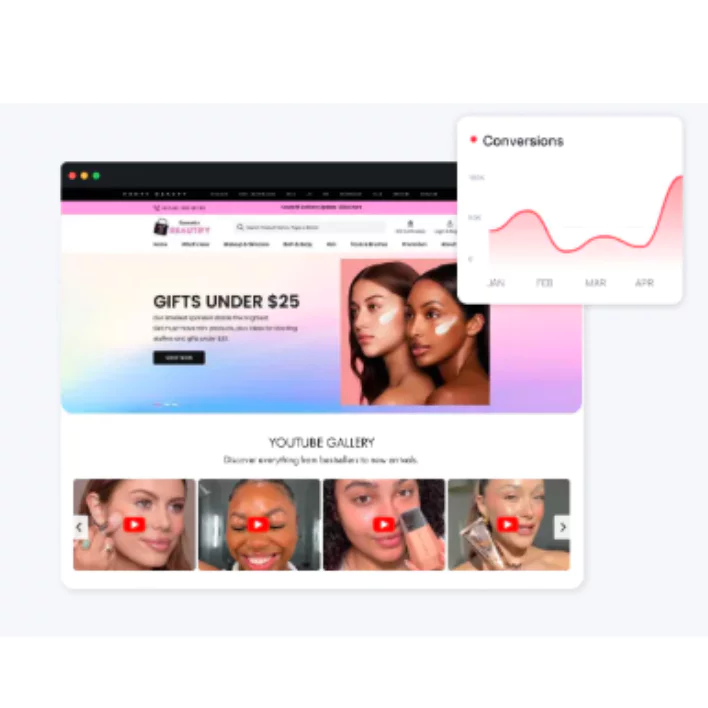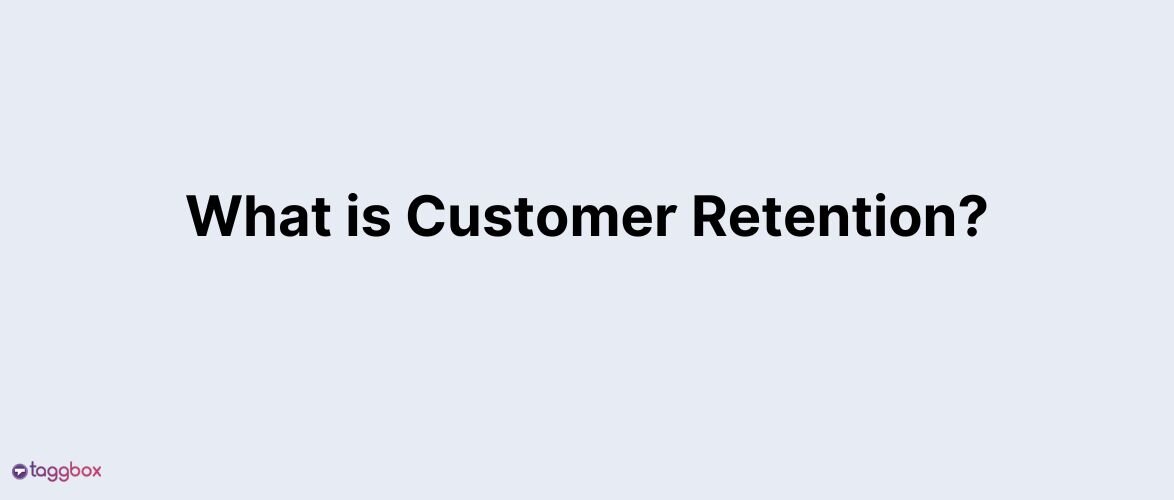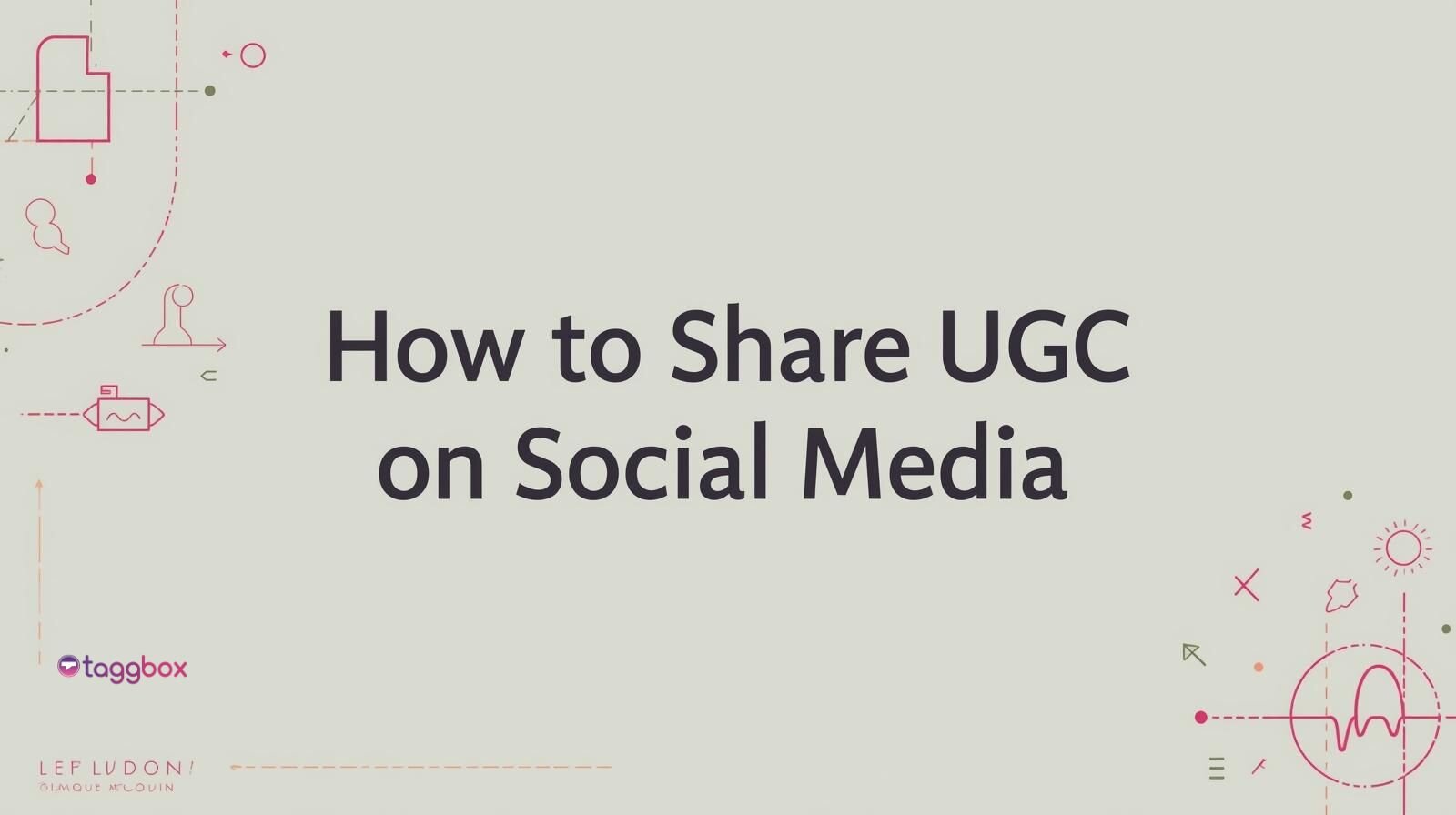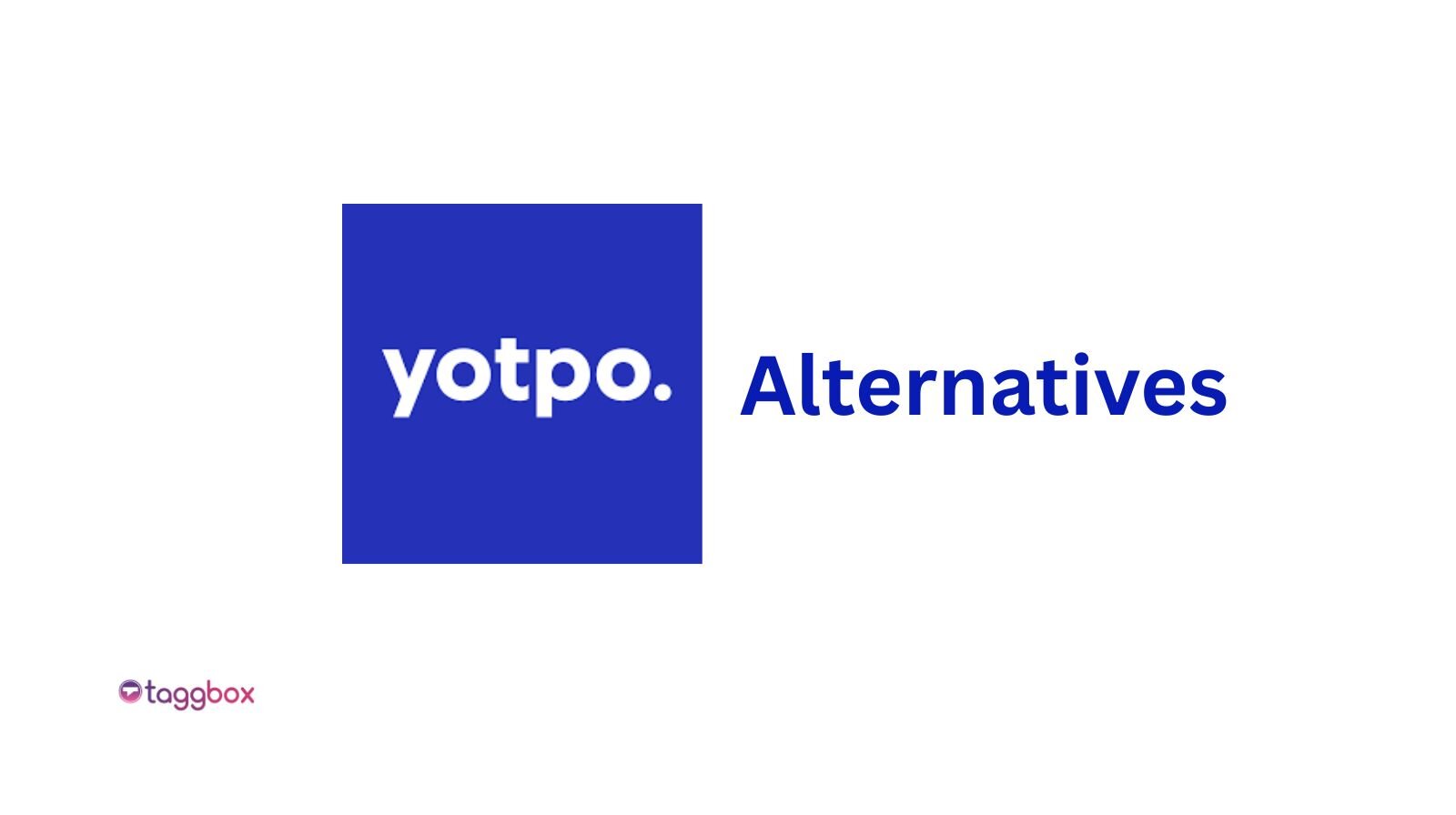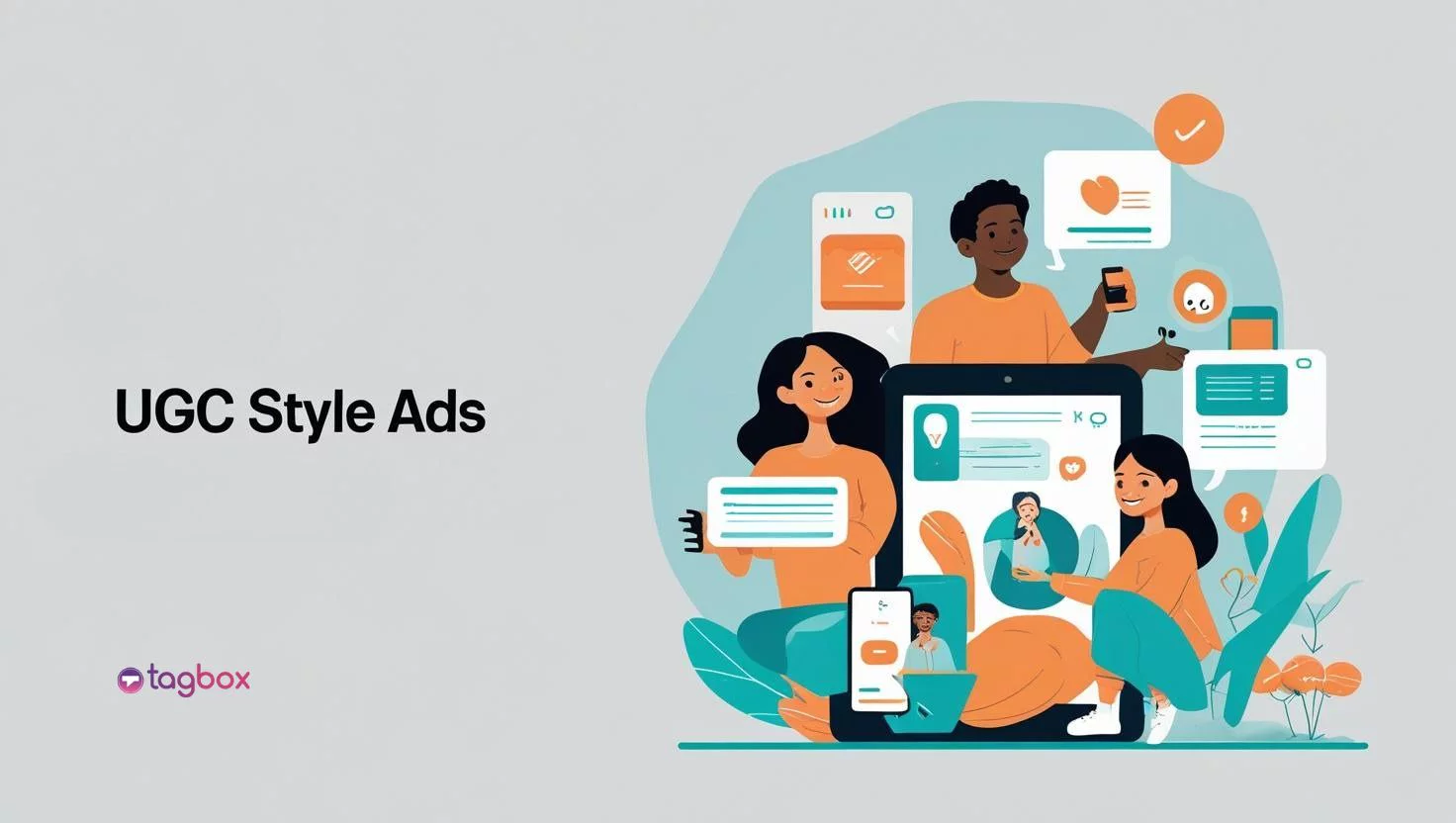Read summarized version with
Do you think User-Generated Content (UGC) is a new term for you? Let’s see about that. Have you ever scrolled over a mouthwatering recipe on Instagram, tried it, and then showed off your masterpiece on your story? Chances are, you’ve unknowingly dipped your toes into the world of User Generated Content (UGC). It’s basically a digital potluck where everyone brings something unique to the table, turning everyday moments into shared experiences.
No spoilers, but by the end of this blog, you’ll be geared up with everything you need to understand User-generated content (UGC) and how you can UGC-fy your brand. We will be covering
- What is User-generated Content (UGC Meaning)?
- Various types of UGCs,
- How using UGC in your marketing can benefit your brand and
- Examples of some brands that have absolutely killed their UGC campaigns.
So, let’s jump in!
What is User-Generated Content?
User-generated content (UGC) refers to any content created by users of a website or online platform, as opposed to content created by the platform itself. This includes images, videos, blog posts, comments, and reviews.
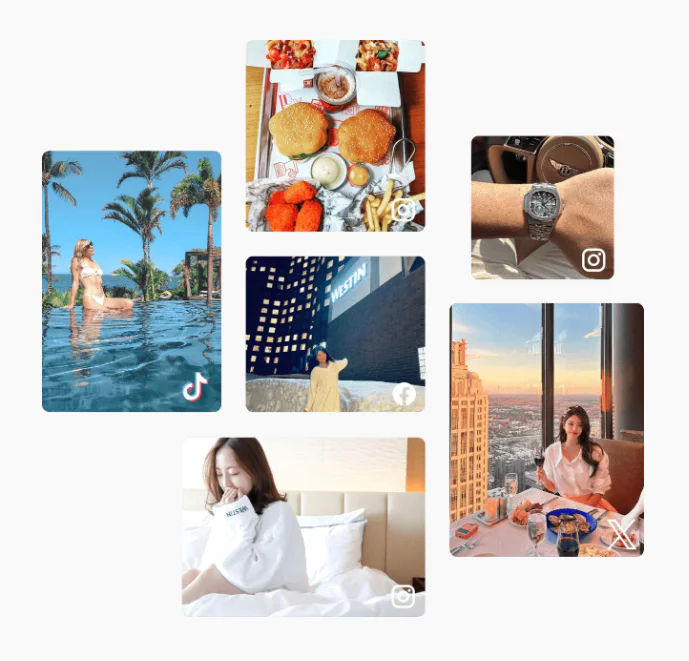
UGC captures individuals’ real experiences, opinions, and creativity rather than the polished messages crafted by companies. It’s the unfiltered, authentic content that paints a genuine picture of how people interact with products, services, or just about anything they find interesting.
In simpler terms, when you are about to book a hotel, and you skip everything and rush to reviews, that is just an example of you wanting to know what other “users” like you think of the place and get an authentic opinion! This is why even your users expect you to use “User-generated content.”
“The next wave of the Web is going to be user-generated content.”
John Doerr, Venture Capitalist
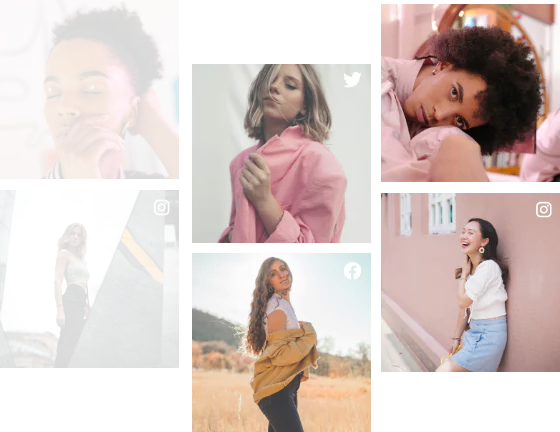
Get the Perfect UGC Solution for Your Brand
Why is User-Generated Content Important?
In a world saturated with marketing messages, consumers crave authenticity. They’re bombarded with picture-perfect ads and carefully crafted social media posts, making it difficult to discern genuine recommendations.
This is where UGC (User-Generated Content)shines. Imagine scrolling through Instagram and coming across a video tutorial by a regular person using your brand’s new eyeshadow palette. They showcase different techniques, highlight the blendability of the colors, and share their honest thoughts on the product’s performance. This authentic review resonates far more than any traditional advertisement.
UGC builds trust by showcasing real people using and loving your products. It fosters a sense of community as consumers connect over shared experiences and product recommendations. Ultimately, this drives conversions as potential customers are more likely to purchase products endorsed by their peers.
Explore Also – What Is UGC Video
Types of User-Generated Content
User-Generated Content (UGC) comes in various forms, reflecting the diverse ways people express themselves online. Here are some common types of UGC:
- Social Media Posts
- Reviews and Ratings
- Images and Videos
- Blog Comments
- Forums and Communities
- Memes and GIFs
- Podcast Contributions
- Contests and Challenges
- Live Streaming
- Interactive Content
Understanding these types of UGC helps businesses and individuals tap into the wealth of content created by their audience, fostering engagement and building a sense of community.
“People are more likely to change their mind or behaviors when the result will make them feel better about themselves, and oftentimes that means being part of a larger group.”
Chris Graves, President & Founder, Ogilvy Center for Behavioral Science at Ogilvy
How using UGC will Benefit Your Brand:
Now that you understand what UGC is, let’s talk about why you are actually here. You want to know what User-Generated Content (UGC Meaning) can do for your brand. Let’s dive into how incorporating UGC into your marketing strategy can be a game-changer for you:
1. Building Trust
In a world filled with marketing noise, trust is a rare commodity. UGC (User Generated Content) provides social proof, showcasing that real people endorse and enjoy your products or services. Taggbox’s UGC Suite facilitates the process, ensuring your brand is visible, trustworthy, and a leader in your industry.
2. Maximizing Conversions
When potential customers see real people using and loving your offerings, they’re more likely to convert. Taggbox’s UGC Suite empowers you to seamlessly integrate user-generated content into your marketing strategy, boosting conversions and, of course, sales.
3. Showcasing Uniqueness
Every brand has a story, and UGC allows your users to narrate it in their own words. Taggbox’s customization options enable you to tailor UGC to fit your brand, providing a unique identity that sets you apart from the competition.
4. Fostering Connections
UGC is not just content; it’s a bridge to a thriving user community. Taggbox UGC Suite lets you listen to your audience, respond to their feedback, and create influential content that fosters meaningful connections.
Incorporating UGC into your brand strategy isn’t just a trend; it’s a powerful way to connect with your audience, build credibility, and create a community that actively supports and promotes your brand.

Get the Perfect UGC Solution for Your Brand
Explore Now – Top User Generated Content (UGC) Platforms
Some Actionable Tips for Your UGC Campaign
Here are some quick and easy tips to help you connect, engage, and shine with the authentic power of content created by your community.
- Clear Guidelines: Provide clear guidelines for users contributing content. Specify themes, formats, and any brand-related requirements to ensure the UGC aligns with your brand image.
- Engage and Encourage: Actively engage with users who contribute content. Respond to comments, acknowledge submissions, and create a sense of community. Encourage participation through contests, challenges, or giveaways.
- Consistent Branding: While encouraging creativity, maintain a consistent brand image. Incorporate brand elements into UGC campaigns, ensuring that user-generated content seamlessly fits into your overall branding strategy.
- Rights Management: Clearly communicate the terms of use for user generated content and obtain proper permissions. Implement an efficient rights management system to avoid legal issues and ensure compliance.
- Diverse Content Formats: Personalization of a variety of content formats, including images, videos, reviews, and testimonials. Diversifying content keeps your UGC campaigns fresh and appeals to a broader audience.
- Prominent Display: Showcase user-generated content prominently on your website, social media, and marketing materials. Highlighting UGC reinforces the sense of community and builds trust among potential customers.
- Strategic Calls-to-Action (CTAs): Incorporate strategic CTAs within UGC campaigns. Guide users on how to participate, whether it’s by using a specific hashtag, submitting content on a dedicated platform, or engaging in a particular way.
- Monitoring and Moderation: Regularly monitor user-generated content to ensure it aligns with your brand values. Implement moderation tools to filter out inappropriate content and maintain a positive brand image.
- Incentives and Rewards: Provide incentives for users to contribute content. This could include exclusive access, discounts, or the chance to be featured prominently. Rewarding contributors fosters a sense of appreciation.
- Data Analysis: Leverage analytics tools to measure the performance of your UGC campaigns. Understand engagement metrics, user demographics, and the impact of UGC on your overall brand visibility.
Remember, the success of UGC lies not just in the quantity of content but in the quality of engagement and the authentic connections it builds with your audience.
How Do You Integrate User-Generated Content Into Your Marketing Strategy?
Gone are the days of solely relying on traditional marketing messages. People seek genuine recommendations and experiences from real users. This is where User Generated Content (UGC) comes into play. “We were initially skeptical about using IGC in our marketing, but we’ve been pleasantly surprised by its reach across socials and how followers have engaged with it. Designer-Carpet.co.uk
UGC encompasses any content users create, including photos, videos, reviews, and social media posts. The following tips outline how you can harness the power of User-Generated Content to enhance your marketing efforts:
1. Run engaging contests:
Encourage content creation by hosting photo contests with travel-related themes like “Capture Your Dream Adventure” or “Most Unique Local Experience.” Offer exciting travel experiences or merchandise as prizes.
2. Utilize relevant hashtags:
Create a branded hashtag and encourage users to share their travel photos and stories using it. Additionally, leverage popular travel hashtags to gain a wider reach.
3. Partner with travel influencers:
Collaborate with travel bloggers or social media personalities who resonate with your target audience. They can create engaging content showcasing destinations, activities, or travel products.
4. Feature user-generated content:
Repost captivating travel photos and videos on your social media channels, tagging the creators. This showcases the beauty of various destinations and the experiences travelers enjoy.
Check this – UGC Ads
Showcase User-Generated Content (UGC) on Your Website
- Display customer reviews and testimonials: Positive feedback from real travelers builds trust and social proof, influencing booking decisions.
- Create a dedicated UGC gallery: Showcase the best user-generated photos and videos on a designated page on your website. You can categorize them by destination, activity type, or travel theme.
- Incorporate UGC into travel blogs: Feature user-generated content alongside informative blog posts about various destinations or travel experiences. This adds a touch of authenticity and allows travelers to see the locations through a different lens.
Think Beyond the Obvious
- Incorporate UGC into email marketing campaigns: Feature user-generated content alongside special offers or highlight travel experiences at various destinations and send them using email software like MailerLite or Mailchimp. This personalizes your emails and entices potential customers to book.
- Run social media takeovers: Partner with relevant travel content creators to give them temporary control of your social media accounts. This allows them to share their unique perspective and showcase different travel experiences.
Remember:
1. Always obtain permission: Before featuring any user-generated content, ensure you have the creator’s consent.
2. Maintain brand alignment: While encouraging creativity, ensure the UGC aligns with the overall image and experience you want to portray.
By implementing these strategies, businesses in various sectors can leverage the power of UGC to connect with their audience, showcase their offerings in an authentic light, and ultimately drive engagement and conversions.
Successful User-Generated Content Examples
There are multiple user-generated content examples, but these are some of the best UGC examples.
1. Snickers: Rookie Mistake

Snickers hit the mark with its “Rookie Mistake” UGC campaign, turning everyday blunders into a fun and engaging experience. Here’s why it stands out:
- Weekly Prizes and Engagement: The campaign introduces an element of gamification by offering weekly prizes and encouraging users to participate regularly. This not only boosts engagement but also creates a sense of anticipation.
- Sweepstakes and Exclusive Experiences: By incorporating a “Rookie Mistake Weekly Sweepstakes,” Snickers adds an extra layer of excitement. The grand prize, an exclusive Super Bowl experience, elevates the campaign, offering a unique reward that resonates with football fans.
- Humanizing the Brand: Celebrating “rookie mistakes” humanizes the Snickers brand. It transforms the campaign from a promotional activity into a shared experience, allowing users to laugh at relatable mishaps and connect with the brand on a personal level.
- Social Media Integration: Leveraging platforms like Twitter and Instagram, the campaign extends its reach and creates a space for users to interact. Social media integration amplifies the campaign’s visibility and encourages a broader audience to join the fun.
In essence, Snickers turns lighthearted user mistakes into a strategic and entertaining marketing tool, reinforcing its brand identity as a snack that brings joy and humor to everyday moments.
2. Disney: Disney100 on TikTok

Disney’s venture into UGC with the Disney100 campaign on TikTok showcases the brand’s ability to leverage popular platforms for engagement. Here’s why it’s a success:
- Tapping into Fandom: This campaign celebrates Disney’s century-long legacy, tapping into the deep well of affection and nostalgia fans hold for its characters and stories. By partnering with TikTok, Disney meets its audience where they already gather.
- Interactive Content: The campaign goes beyond passive viewing. Fans actively engage with Disney content by creating their own videos, participating in trivia contests, and collecting “character cards.” This interactivity transforms users from mere spectators to active contributors.
- Building Community: Disney100 fosters a community of TikTok users who share a common love for Disney. It’s a space where fans connect, share their creativity, and bond over shared experiences, reinforcing the sense of belonging to the larger Disney family.
- Capitalizing on Enthusiasm: By allowing fans to participate in the consumption of Disney content on TikTok actively, Disney taps into the enthusiasm of its audience. This not only keeps the brand top of mind but also transforms fans into brand ambassadors.
Disney100 on TikTok is a creative blend of leveraging a popular social platform, fostering user participation, and capitalizing on the inherent enthusiasm that Disney fans bring to the table. It’s a testament to Disney’s adaptability to contemporary trends in digital culture.
These UGC campaigns demonstrate the power of engaging users, creating a sense of community, and leveraging digital platforms to amplify brand experiences.
Check Also – UGC Video Examples
Who Creates User-Generated Content?
The beauty of UGC lies in its democratic nature. Anyone can be a UGC creator, making it a powerful tool for brands to connect with a diverse audience.
Here’s a breakdown of the potential contributors:
Loyal Customers:
These are your biggest advocates, often enthusiastically sharing their positive experiences with your brand through reviews, photos, and social media posts.
Travel Enthusiasts:
In the travel industry, passionate travelers document their journeys through captivating photos, videos, and blog posts. They share their experiences, recommendations, and insights, potentially influencing the decisions of others.
Social Media Influencers:
Individuals with established followings on social media platforms can create content specifically about your brand or travel destination in exchange for exposure or compensation.
Micro-influencers:
These are social media users with a smaller but highly engaged audience. Partnering with micro-influencers can be an effective way to reach a targeted niche and generate authentic content.
Content Creators:
Travel bloggers, photographers, and videographers often create high-quality content showcasing destinations, activities, and travel products. They can be valuable partners in generating engaging UGC.
Remember:
- Not all UGC requires a significant following: Even everyday users sharing their genuine experiences can contribute valuable content.
- Focus on building relationships: Engage with potential UGC creators, respond to comments, and show appreciation for their contributions.
Where Brands Can Use User Generated Content?
Producing UGC alone isn’t enough; brands must maximize their marketing efforts and realize their UGC goals. Further, it is worth noting that by the year 22, social media boasted more than 4.59 billion active users, which is a colossal figure. Therefore, it indicates vast amounts of UGC created.
Below are a few ways in which brands can do it.
1. Embed It On Your Website
UGC’s authenticity, uniqueness, diversity, and vibe can alter your website’s impact. It speaks for the brand and enhances user engagement, awareness, and credibility while indirectly improving the website’s ranking in search engine results. You can integrate the Google rank tracking tool to know the real-time performance insights and data. Even 74% of US audiences prefer online reviews before purchasing any item. To capitalize on this, show Google reviews on your website to provide social proof and foster trust among potential customers.
However, since social media platforms facilitate boundless content creation, it can be difficult to review each post and select specific ones to embed on the website.

For example, Skull Candy’s creative content marketing strategy centered on creating a visual appeal by showcasing user experiences and ideas. The brand also features customer reviews on its website, and this form of user-generated content is essential to boost conversions.
Reviews given by their customers have existed for a long time on their eCommerce websites, leading to more reviews.
Leveraging UGC-like customer reviews can take your users’ experience to another level regardless of how compelling your brand’s visuals are.
2. Make It Shoppable
By making their content shoppable, brands can enhance users’ experiences by simplifying their purchase journey.
It has become the need of the hour because buyers are looking out for faster and more efficient processes. By providing them with a two-step check-out, brands stand a chance to amplify their sales.

Further, the emergence of social commerce has motivated people to explore more products they can incorporate into their lives. More than 79% of consumers say “UGC highly impacts their purchasing decisions”.
With user-generated content made shoppable, brands can easily turn users’ points of attraction into sales.
For example, Mum & Daughter, a clothing brand, increased its conversions by 186% and its average order value by 58% through shoppable UGC and shoppable Instagram galleries on its website.
“UGC is an incredibly effective way for a brand to influence its audience and convert them into buyers.”
Dylan Duke, Founder and CEO at Glewee
3. Display It At Live/Virtual Events
Nothing like user-created content when fetching your audience’s attention in live or virtual events. It encourages people to be participative by creating and posting content on social media posts mentioning the event to get featured on digital screens.

This attracts the audience and keeps them hooked throughout the event while simultaneously working on your reach and brand awareness.
Further, it is difficult to keep the attendees’ curiosity throughout the event. But this becomes convincingly possible with social walls, including user-generated content, customized to appeal to them.
So, can there be a better way to keep your audience entertained? We doubt!
4. Integrate It On Digital Signage
The digital signage industry is growing at a rapid rate. As a result, more and more businesses, irrespective of their niche, are opening up to installing it on their premise to bridge the communication gap, gain trust and enhance viewers’ attention, engagement, and conversion.

Amidst the rise in competition, digital signage displays are becoming a powerful strategy to attain a stand-out position in the market.
Incorporating UGC into digital displays can attract, influence, and inspire the viewers like a charm. Showcasing what your users say about your business can generate excitement and initiate interactions.
5. Repost It On Social Handles
Reposting on social media is a great way to make customers feel valued for their contributions while enhancing credibility and curiosity.
User-generated content is a key part of social media marketing strategy, leveraged by brands like National Geographic, River Island, GoPro, etc.
However, before using this content in any form, it is essential to give the creator or the owner credit and ask permission.
Reposting involves legalities, which is non-negotiable as it is considered a violation of IP if practiced avoiding compliance from the content creator.
For example, Adobe is the brand behind Photoshop, so you expect some eye-popping pictures on Adobe’s feed. And they most definitely deliver in that department, reposting customer photos to foster a sense of community. Many of which are created or enhanced using Photoshop alternatives, making high-quality user-generated content more accessible to everyone.
Adobe treats its users more than just data points. For example, the brand complemented its followers in one of its posts, referring to them as Adobe’s ‘creative community.’ Appreciating people for their efforts via a repost will motivate them to create more content.
6. Create Robust Email Campaigns
Email campaigning is a traditional form of marketing that has been part of digital marketing since before computers were invented. Nine out of 10 marketers use email marketing to distribute content organically.
However, all marketers agree on the challenges of moving the receivers’ attention and keeping them engaged with the brand. They can now overcome this fear by leveraging consumer-generated content in their email campaigning.

User-Generated Content (UGC) is not branded; it is created by different individuals adding their individuality to each content, helping brands serve some unique visuals to the email receivers in each email.
User-Generated Content in email marketing helps brands leverage content beyond social media, fulfill the visual appetite of the users, activate abandoned carts, and improve the email engagement rate. Most importantly, creates a two-way interactive flow between the brand and its audience.
Dune London incorporated UGC in their emails featuring their ‘Your Style’ gallery, which saw 55% more click-throughs compared to previous emails not featuring user-created content. This drove a six-hold hike in their revenue.
85% of users are found to be more influenced by UGC than the content made by brands directly.

Collect All The Existing UGC Around Your Brand
What’s the difference between UGC and influencer marketing?
1. Origin of Content:
- UGC: Content is organically created by everyday users, often driven by genuine enthusiasm or a desire to share experiences.
- Influencer Marketing: Content is created through a specific collaboration between a brand and an influencer. Influencers have established followings and often receive compensation (monetary or through products/services) for promoting a brand or product.
2. Level of Control:
- UGC: Brands have limited control over the content created by users. However, they can set guidelines and encourage specific themes through contests or branded hashtags.
- Influencer Marketing: Brands have greater control over the content creation process. Collaborations often involve collaboration on content strategy, messaging, and creative direction.
3. Reach and Audience:
- UGC: Can reach a broad audience depending on the popularity of the online course creation platform and the use of relevant hashtags.
- Influencer Marketing: Targets a specific audience aligned with the influencer’s established following.
4. Cost:
- UGC: Generally less expensive as it relies on organic content creation by users.
- Influencer Marketing: This can be more expensive due to the involvement of established influencers with potentially high fees or product costs.
| Feature | User-Generated Content | Influencer Marketing |
| Origin of Content | Organic creation by everyday users. | Collaboration between brand and influencer. |
| Level of Control | Limited control for brands. | Greater control through collaboration. |
| Reach and Audience | Broad audience depending on platform and hashtags. | Targeted audience aligned with influencer’s following. |
| Cost | Generally less expensive. | Potentially more expensive due to influencer fees. |
| Focus | Building brand awareness, fostering authenticity, and user engagement. | Targeted reach, leveraging influencer credibility, driving conversions. |
In essence,
- UGC is a powerful tool for building brand awareness, fostering authenticity, and encouraging user engagement.
- Influencer marketing is effective for targeted reach, leveraging an influencer’s credibility, and potentially driving conversions.
Choosing the right approach:
The ideal strategy often involves a combination of both. Utilize User Generated Content to cultivate a sense of community and organic user advocacy while strategically partnering with relevant influencers to reach targeted audiences and achieve specific marketing goals.
Now It’s Your Call
As you venture into UGC, remember that it’s more than just showcasing your products; it’s about fostering connections and building an authentic brand narrative.
With the right tools, UGC becomes a powerful tool to transform your brand into a collaborative adventure shaped by the very people it serves. Need our help with your campaign? Taggbox UGC Suite is always here! Book a demo to know how.
Cheers to the endless possibilities that User-Generated Content unlocks! 🚀✨



